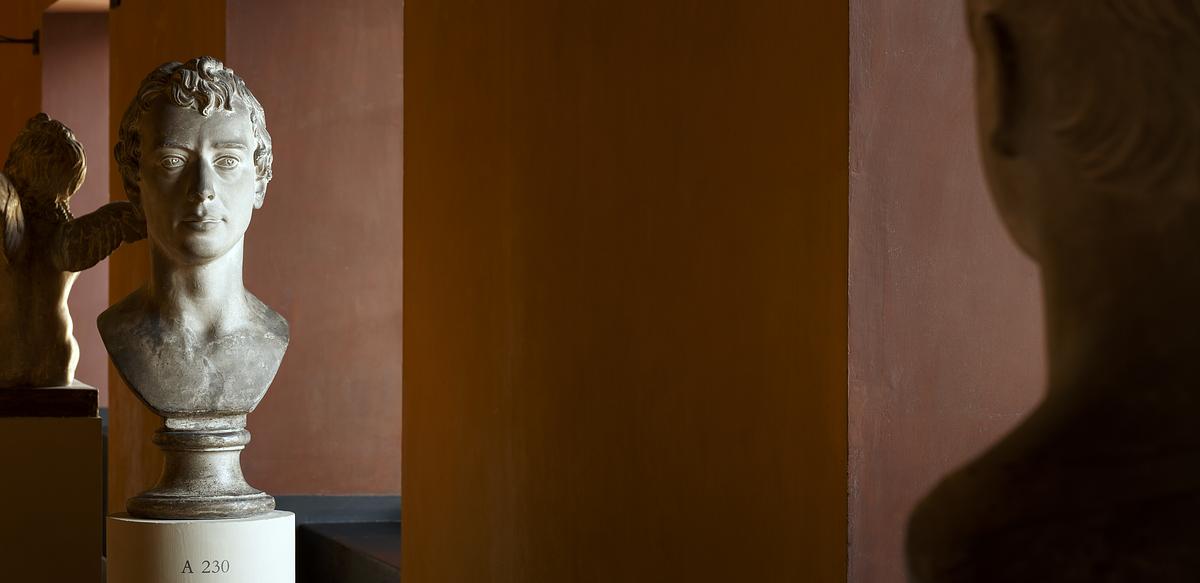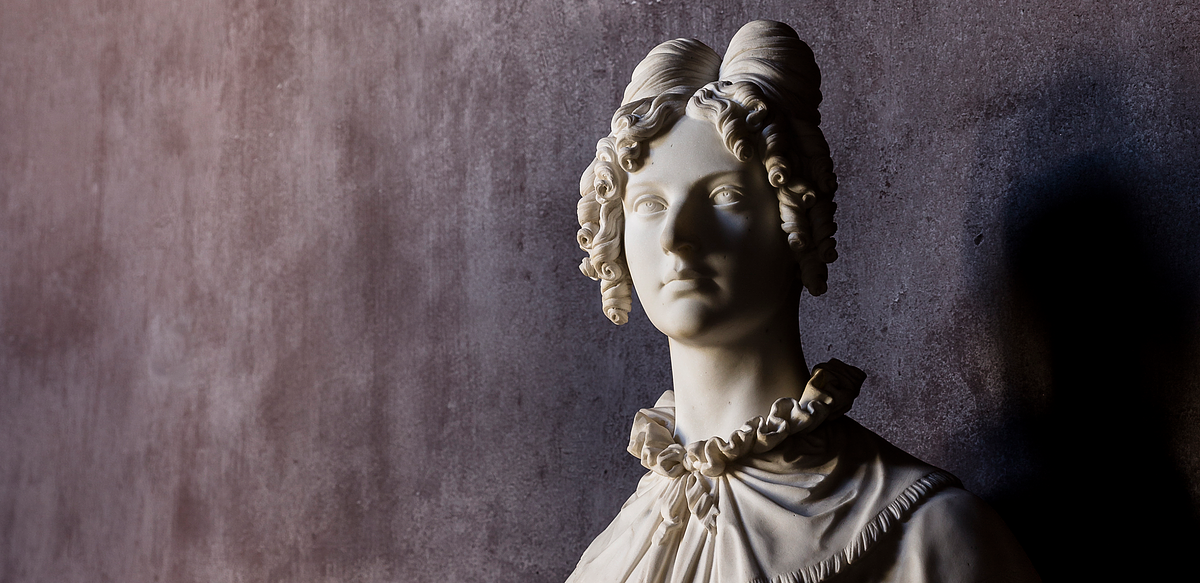
POWERFUL PRESENCES
In an extensive research and dissemination project entitled “Powerful Presences: the Sculptural Portrait between Presence and Absence, Individual and Mass”, Thorvaldsens Museum, in partnership with the University of Copenhagen, will investigate the meaning and significance of the sculptural portrait.
Curiosity and wonder
Although today, as never before, we are bombarded by portraits in both social and traditional media, interest in the three-dimensional sculptural portrait has strikingly declined. What accounts for this trend, and what does it mean for our understanding of the portrait as a medium?
Portraits have a visceral power of attraction. They rouse our curiosity, prompting us to wonder who the human being is behind the face—and, indirectly, to wonder about our own identity. But whereas painted and photographed portraits are immediately arresting and fascinating, sculptural portraits can seem harder to approach: there is no background, and only few details, to help orient the beholder. The result is that such portraits can easily seem like a sea of unknown faces that one only takes fleeting note of in passing: irrelevant, immaterial, and perhaps even decidedly boring. But it was not always thus.
Portraits have a visceral power of attraction. They rouse our curiosity, prompting us to wonder who the human being is behind the face—and, indirectly, to wonder about our own identity. But whereas painted and photographed portraits are immediately arresting and fascinating, sculptural portraits can seem harder to approach: there is no background, and only few details, to help orient the beholder. The result is that such portraits can easily seem like a sea of unknown faces that one only takes fleeting note of in passing: irrelevant, immaterial, and perhaps even decidedly boring. But it was not always thus.
Thorvaldsen as a portrait artist
Bertel Thorvaldsen (1770-1844) was one of Europe’s most popular portrait artists. Over the course of his lifetime, he completed approximately 180 portraits, depicting individuals ranging from members of Europe’s royal houses to leading cultural personalities to ordinary Danish citizens. Thorvaldsen’s portraits thereby make up the largest single group of artworks in his oeuvre. In former times, such sculptural portraits were a matter of course. So what happened? Why did they go out of fashion? These are some of the questions that this project seeks to illuminate.

Theory and practice
In the research and dissemination project “Powerful Presences,” we work with the sculptural portrait’s materiality, presence, and effect on the beholder, on the basis of recent theories about the *agency* of the artwork, i.e., its capacity to influence its surroundings. By shifting our gaze away from the life and times of the portrayed subject—the focus of prior research—we gain the opportunity to examine more closely the physical effect of portraits, and how they affect the beholder. The concrete starting-point is the portrait collection housed in Thorvaldsens Museum.
Concrete results
The project is interdisciplinary in its approach to the subject-matter, combining elements from art history, archaeology, and museology, among other fields, with written sources from Thorvaldsen’s own age. Simultaneously, it is intended that during the project period, the museum will function as a laboratory for new experiments in dissemination of sculptural portraits on the basis of the ongoing research projects. The portrait project will culminate in an exhibition, a conference, a seminar series, a publication, and an array of concrete dissemination projects. It will also include a number of individual research projects, including a Ph.D. and a postdoc.
*The research and dissemination project “Powerful Presences” is a collaboration among Thorvaldsens Museum and the University of Copenhagen. It has been made possible by a grant of DKK 5,439,250 from the Velux Foundation’s Museum Programme. The project will be conducted during the period 2017-2020.*
*The research and dissemination project “Powerful Presences” is a collaboration among Thorvaldsens Museum and the University of Copenhagen. It has been made possible by a grant of DKK 5,439,250 from the Velux Foundation’s Museum Programme. The project will be conducted during the period 2017-2020.*
Contact
For further information on the project, please contact the heads of the project, associate professor Jane Fejfer (fejfer@hum.ku.dk) and curator Kristine Bøggild Johannsen (kristine.johannsen@thorvaldsensmuseum.dk).